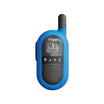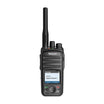In the world of radio communications, privacy and security are paramount. One technology that stands as a bulwark against eavesdropping is the "Scrambler" feature integrated into modern two-way radios. This feature is not just about keeping conversations private; it's about safeguarding critical information in various sectors like law enforcement, military operations, and corporate communications.
A scrambler works by encrypting audio signals before they are transmitted. This means that even if the signals are intercepted, they cannot be understood by unauthorized listeners. The process involves altering the properties of the original voice signal in a way that can only be reversed and understood by a receiver with the corresponding descrambler.
The importance of this feature in today's world cannot be overstated. With the increasing threat of cyber espionage and information theft, having a scrambler in a radio system is akin to having a personal bodyguard for your communications. It ensures that sensitive discussions, whether they're about tactical planning in a military operation or strategic decisions in a corporate meeting, remain confidential.
Furthermore, the scrambler feature is a testament to the evolving landscape of communication technology. It reflects the industry's commitment to enhancing security measures and adapting to the sophisticated threats in the digital age.
In summary, the scrambler feature in radio communications is a critical tool for maintaining privacy and security. It transforms ordinary radio transmissions into fortified channels, protecting the integrity and confidentiality of vital communications.











































